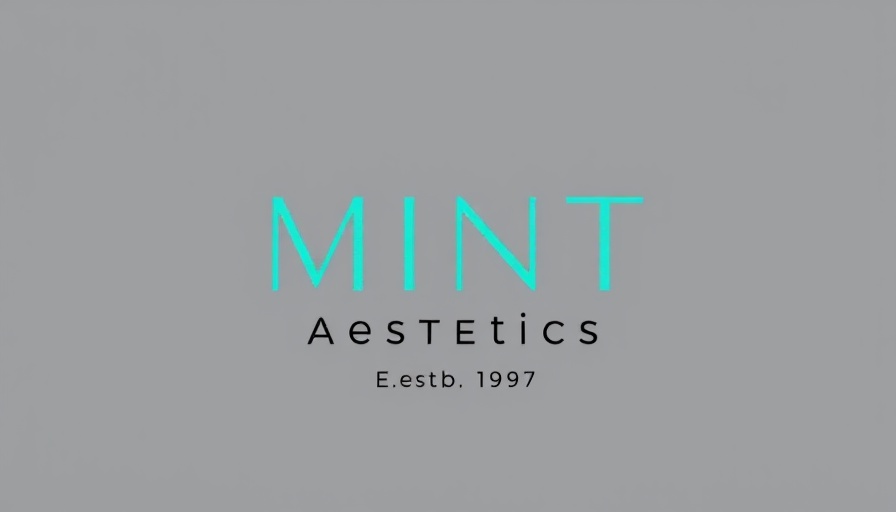
Understanding Laser Settings: Common Missteps in Training
In today's competitive landscape of medical spas, precise knowledge about laser settings is crucial for optimal results and client satisfaction. Unfortunately, many new providers often misinterpret or improperly set these parameters, leading to adverse outcomes and diminished trust. As an owner of a medical spa aiming to grow your practice, it's vital to understand why these missteps occur and how you can train your staff effectively.
Navigating the Basics of Laser Settings
Laser settings can be intricate, and new practitioners may not grasp the significance of each parameter. This lack of understanding can lead to inconsistent results. Training programs should emphasize the foundational aspects of laser operation, ensuring that each staff member feels confident interpreting laser technology.
| Key Points | Solutions |
|---|---|
| Limited understanding of laser physics. | Provide comprehensive educational resources. |
| Misinterpretation of energy levels. | Visual aids and demonstrations in training. |
| Lack of confidence in adjusting settings. | Simulated practice sessions. |
| Ignoring safety protocols. | Regular safety training updates. |
Customized Training for Optimal Results
A customized training program can bridge the many gaps that new providers face. Each medical spa has unique needs based on the types of services offered and the demographics of their clientele. Tailoring the training to include specific laser types used within the spa ensures relevance and application of skills learned in real scenarios.
| Key Points | Solutions |
|---|---|
| Diverse laser tools require different setups. | Hands-on training with each device. |
| Outdated training methods. | Implement modern training techniques. |
| Infrequent refresher courses. | Establish a regular training calendar. |
| Insufficient performance assessments. | Regular evaluation and feedback sessions. |
Feedback Mechanisms: An Essential Element of Training
Incorporating client feedback into training protocols can enhance service delivery. This aspect enables practitioners to recognize common client concerns and adjust their techniques accordingly. Your staff can become more attuned to client needs and create tailored solutions, fostering better relationships and trust.
| Key Points | Solutions |
|---|---|
| Lack of patient satisfaction data. | Implement feedback forms post-treatment. |
| Team members may feel disconnected from results. | Share feedback within team meetings. |
| Relying solely on clinical outcomes. | Balance clinical with subjective assessment. |
| Limited success tracking. | Create a client follow-up system. |
Emphasizing Continuous Learning
With technology advancing rapidly, it’s vital for medical spa staff to stay abreast of the latest techniques and protocols. Offering continuous education opportunities, workshops, and seminars can empower your providers to enhance their skills constantly.
| Key Points | Solutions |
|---|---|
| Rapid advancements in laser technology. | Encourage ongoing professional development. |
| Staff feel unprepared for new procedures. | Provide access to online courses. |
| Resistance to change. | Foster a culture of curiosity and growth. |
| Not tracking continuing education opportunities. | Maintain a log of educational activities. |
Conclusion
As a medical spa owner, fostering a culture of continuous education and improvement within your team is essential. By providing robust training programs, encouraging ongoing learning, and incorporating client feedback into your protocols, you can boost the confidence and competence of your staff, ultimately leading to enhanced client satisfaction and business growth.
Actionable Checklist for Medical Spa Owners
- Establish a comprehensive training program focusing on laser physics.
- Implement regular assessments of staff performance and techniques.
- Encourage ongoing education through workshops and courses.
- Incorporate client feedback into staff evaluations.
- Update training materials regularly to reflect new technology.
Frequently Asked Questions
Q: How often should we train new laser technicians?
A: Regular training should occur every 6-12 months, with specialized sessions as new technologies emerge.
Q: What should be included in a laser training program?
A: Essential components include laser physics education, hands-on practice, safety protocols, and client management strategies.
Q: How can I measure the effectiveness of the training?
A: Use client satisfaction surveys, staff performance assessments, and treatment results to gauge effectiveness.
 Add Row
Add Row  Add
Add 




Write A Comment